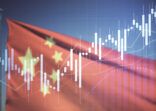Investors and savers are struggling with stock market volatility, geopolitical tension and macroeconomic uncertainty. These fears have been exacerbated by President Trump’s tariffs, ambiguous policy statements and speculation on the demise of US exceptionalism.
Tariffs, especially, could negatively affect global economic growth in the medium- to long-term and could lead to higher inflation. Given a choice between economic growth and rising prices, Manulife believes that the US will opt for growth and looser monetary policy.
In this environment, some members of the Mandatory Provident Fund (MPF), a compulsory saving scheme (or pension fund) for Hong Kong residents, “feel the current market volatility has exceeded an acceptable level, and are tempted to move part of their accrued benefits into low-risk funds as a short-term refuge and reduce the volatility of their overall investment portfolio,” Jeanie Ho, head of Hong Kong and Macau retirement at Manulife, told FSA in an interview.
Since President Trump’s announcement of wide-ranging tariffs in early April, a substantial number of MPF members have switched their fund allocations to mitigate risk.
In April, there was an over 50% year-on-year increase in members who moved their allocations to more risk-averse funds, according to Manulife data.
The Manulife strategies that benefited most from the switch, included Interest fund, Conservative fund and International Bonds.
Diversification
Manulife offers a comprehensive MPF platform with 29 constituent funds. This enables members to adopt a more balanced and resilient approach when adjusting and allocating their investments according to different market conditions at various life stages.
“We believe that providing a diverse range of fund options is imperative for members to achieve balanced asset allocation and make informed investment decisions, even in volatile markets,” said Ho (main picture).
Diversification is a strategy that mixes a variety of uncorrelated investments within a portfolio to reduce risk. Diversification is typically performed by investing in different asset classes such as stocks, bonds or real estate, and then in different types of securities within a class.
“Regardless of market conditions, members can leverage dollar-cost averaging to reduce the risks of market timing and mitigate the potential negative impacts of irrational active trading on investment returns,” she added.
Old money
However, there are basically two types of investment approaches for MPF assets, according to Ho.
First, for general investing, a large lump-sum of accumulated MPF contributions could adopt a conservative approach and be temporarily parked in safe haven assets. Second, a monthly fixed future contribution should help members stay invested and wait for upside potential through dollar cost averaging.
But the strategies for managing “old money” and “new money” contributed monthly in MPF investing should differ, said Ho.
Old money refers to accumulated past contributions and investment returns, including accrued benefits in personal accounts.
“For old money, we recommend adopting a conservative approach to build a diversified investment portfolio,” said Ho. “Diversification is particularly effective in managing risk when market volatility increases, helping MPF investments stay on track to achieve personal investment goals in a volatile market environment.”
For instance, bond markets are playing a role in diversifying investment risk and are expected to continue doing so. As correlations between stocks increase, the level of asset diversification between stocks and bonds is also likely to rise.
However, changing funds is a one-time investment and returns will depend on the buy-sell prices at the time of the switch. In volatile markets, when the amount involved in fund switching is large or represents a high proportion of the portfolio value, the risk borne by members is relatively higher.
New money
In contrast, new money is characterised by monthly fixed (future) contributions, allowing members to take advantage of the systematic dollar-cost averaging method, which can average out the cost of purchasing units over the long term and mitigate the impact of short-term market fluctuations on investments.
“For new money, a more flexible investment strategy can generally be adopted,” said Ho.
But, trying to determine the best time to enter a market is not easy. Hence, investment managers do not base their asset allocation decisions on political developments, as they are often difficult to predict and can lead to unexpected market outcomes.
While it is understandable for investors to seek low-risk assets in the face of sudden market fluctuations, these safe havens are typically for temporary shelter and should not turn into “long-term stays”.
“Nor should one hold too many low-risk assets for an extended period, as this would not meet the growth needs of an MPF portfolio over a three to four-decade investment horizon,” Ho warned.
Consolidating accounts digitally
Indeed, less knowledgeable customers face significant challenges in managing their MPF portfolios, particularly in understanding when to adjust allocations and how to compare funds.
Ho suggests that “customers should consolidate their retirement accounts amid stock and bond market volatility, and to better manage and review their portfolio exposures”.
In fact, the top three concerns for customers are: identifying the right time to make MPF portfolio adjustments, understanding MPF funds and comparing them. To help them make better choices, they require data on the latest performance and historical track record of Manulife MPF funds, and regular alerts.
“Customers can receive regular updates and alerts regarding their MPF accounts through digital channels such as the Manulife app,” Ho said.
Pension journey to 90th
Manulife has launched a new MPF personal account(s) consolidation double rewards member offer to celebrate its 90th anniversary in pension management in Hong Kong. It has a promotional period of 1 May to 30 June 2025, and the objective is to incentivise customers to consolidate their MPF accounts while giving back to its customers with gratitude for their support.
“Regular management of MPF accounts is essential for better retirement planning and investment performance,” said Ho.
According to Manulife research, those customers who do not review their MPF investments regularly cite various reasons including little urgency as retirement is distant and a lack of sufficient financial knowledge to manage their portfolios.
By consolidating accounts, they can be made aware of the benefits of diversified portfolios to mitigate risk and generate returns in all market circumstances, according to Ho. “Their accounts are also more visible and comprehensible.”

















